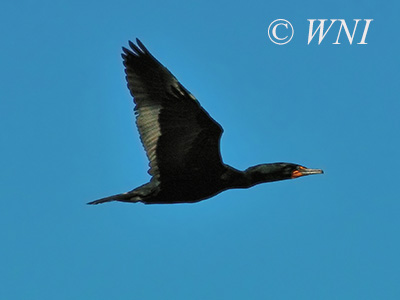| Cormorants (Phalacrocoracidae) |
The Phalacrocoracidae are medium-to-large waterbirds with dark feathers, long, thin and hooked bill, relatively short wings, and webbed feet; the family encompasses 35-40 species. Cormorants feed on fish, but some species also eat aquatic invertebrates. They catch the prey by diving from the surface, and chasing fish underwater. After fishing, cormorants are frequently seen perching with holding their wings out, drying the plumage. The family is distributed in coastal and inland regions throughout the world, including the Antarctic Peninsula.
Cormorants are colonial breeders, nesting along seacoasts or at interior water bodies, usually on cliffs, in trees, but also on the ground, mostly on remote islands. The nest is made of sticks or seaweed, and cemented with guano. Cormorants lay 2-4 pale blue eggs; incubation lasts 3-5 weeks; young leave ground nests at 3–4 weeks and may form crèches, but may remain in cliff and tree nests for up to 6-8 weeks.
 |
Double-crested Cormorant (Phalacrocorax auritus) |
|
| Unauthorized use of our images is NOT permitted. | ||
| Hotlinking or "pinning" of our images to websites is STRICTLY PROHIBITED. | ||
| Copyright © Michael Patrikeev - All Rights Reserved | ||
| |
||





